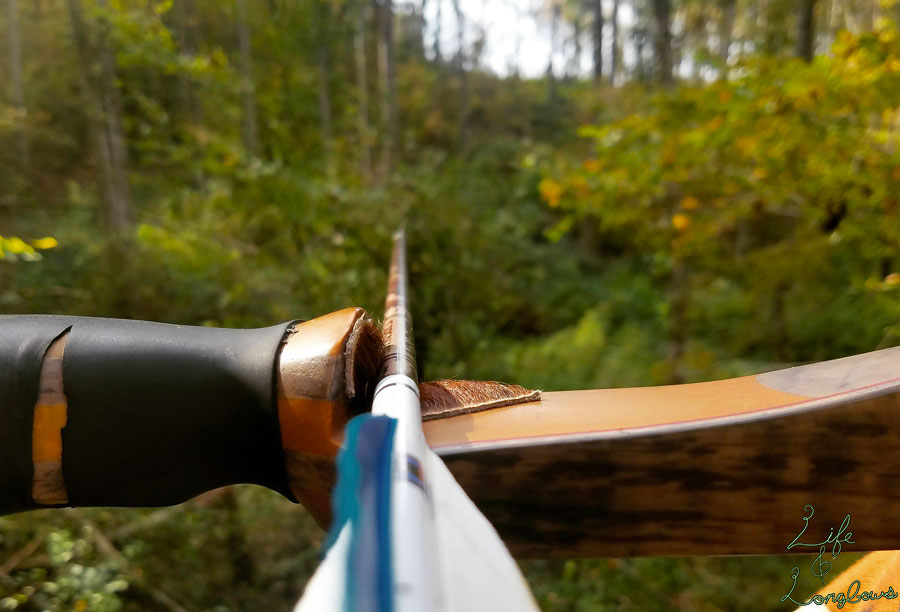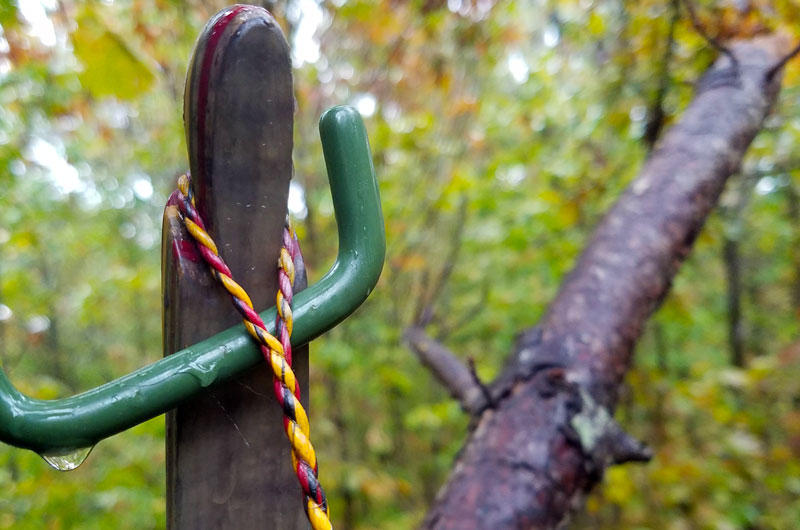
In our latest episode of the Traditional Outdoors podcast, I mentioned wanting to do something I hadn’t done in a very long time – build and hunt with wood arrows.
It’s difficult to pinpoint the exact origin of this change of heart. A wooden dowel (other than a few simple sets for my daughters) hasn’t crossed my workbench in years. After taking a doe with a crudely-crested cedar in 2012, I put my tools away, gave my Young’s feather burner to a friend, and entered the soulless land of synthetic materials.
I used time, or a lack-there-of, to justify the move. My kids were young and staying busy wasn’t something I needed to work on. I was more interested in shooting and less interested in fiddling when it came time to bows and arrows. But time was only one of many excuses. I was burned out and didn’t have the hunger I had in the beginning.

My arrows were simple early on – an aluminum shaft with a 145g field point or two-blade broadhead. They were easy to assemble and they were easy to maintain. They were also more consistent shaft-to-shaft than my wood arrows and stayed straight unless glancing off a rock or concrete floor. I got by with this setup but soon learned the value of a heavy, forward-weighted, hunting arrow. There were several ways to reach the goal, but the people I shot with preferred footed carbons with weighted inserts and heavy broadheads. I went that way as well and had accumulated dozens, thinking it was the final stop in my gear-tweaking journey.
I was wrong. The carbons were an effective setup but I felt little connection to them and connection was the point of the journey. Carbons were also bland and unexciting aesthetically – even the models with wood-grained graphics. Even vinyl wraps and interesting fletching weren’t getting the job done. It felt like putting lipstick on a pig. You can dress a carbon up to look like a wood arrow but they end up feeling like cheap imitations (no matter how expensive they are).
The same can be said for the aluminum “tin cans” but opportunity and nostalgia made those my next stop. My Dad had discovered a half-dozen old aluminum shafts at an antique store and bought them for me as a gift. They were 2216s in the old school BDU camouflage finish and were tapered on both ends to allow for glue on nocks and points. My original arrows, including the one that killed my first deer, were similar and the memories came rushing back while fletching them.

The nostalgia was where the similarities ended. This batch was better tuned and much heavier. I applied my knowledge of Ashby arrow construction to the (already) heavy 2216 shafts and ended up with a hunting arrow tipping the scales at a rib-cracking 820gr with a Magnus Classic on the business end. The setup performed well, passing through a buck and a doe with short recoveries. Again, I wasn’t satisfied. The results were there but the process was lacking. Aluminum arrows were assembled not made. There was no art involved. No personalization. No romance. And some of my closest friends were shooting finely crafted works of art. My arrows were lame in comparison.
I’d also discovered fly tying and loved every second of it. Few things compared to the feeling of a hooked trout on a deer-hair caddis fresh from the vise. The cedar-shaft doe was one of the few. The writing was on the wall. I was going to add wood back to the quiver and planned on hunting for shafts at the Great Lakes Longbow Invitational.
I was looking for cedar, but as I strolled through the vendor area, noticed a stack of raw ash shafts at Emerald Archery’s booth. I had a long history with ash and had been stump-shooting with the same batch for almost a decade without a single break. Emerald had several batches in the 75-80# range at a 620-640 grain weight. While the weight grabbed my attention, the straightness kept it. Ash required heat and a lot of work to straighten. My initial batch were clearance-bin specials and as lumpy as a Michigan highway in the Spring. I spent hours working them straight and swore I would never do it again. But these were quality shafts and the majority were straight enough to shoot out of the bundle. I handed over my money, and for the first time in years, couldn’t wait to start making arrows. The hunger had returned.
The process was as gratifying as I remembered. I took my time at each stage to mind the details and squeeze out every last drop of enjoyment. This kind of patience and attention would have been impossible when I was younger and couldn’t wait to finish and start on the next batch. My process was simple then. I would straighten, taper, and stain each shaft, then wipe on several coats of polyurethane with an old sock. I didn’t own a cresting jig, so I fashioned one out of a block of wood and four casters. It wasn’t the easiest to use. I would spin the shaft with my left hand and crest it with my right. Rudimentary designs and thick, wobbling lines were the result but I was proud of my ingenuity. Fletching was my favorite part. I didn’t have the budget to be picky and often purchased whatever was on sale at a show. The length, wing, color, or brand didn’t matter.
I was in a different place for this latest batch. My budget was larger and I had more patience at 40 than I did at 27. I no longer needed arrows. I just wanted to make them. My process was similar but evolved with experience. I swapped the wipe-on polyurethane for a quart of gloss Polycrylic and a dip tube, which gave me a more consistent and durable finish. I was also gifted a motorized cresting jig and was impressed by the level of detail it allowed. It took some getting used to but the experimentation was half the fun. The paint itself was also an experiment. I’d been drawing with Posca paint markers for several years and thought they might work for this application. While it took several passes to get the thickness I wanted, I couldn’t argue with the results.

The batch produced seven target arrows, four hunting arrows, and a stumper that was too stubborn to make it into either quiver. The hunting shafts were the straightest of the bunch and came in at around 820gr each with a single-bevel Grizzly head. They fly true, hit hard, and have personality. I can’t wait to get them into the woods and have a feeling it is going to be a very special season.
The battle of arrow materials has been raging around every campfire and on every social platform for years. I was passionate enough to weigh in when I was younger but realized doing so was a bit like patting one’s own back. I’ve shot them all and discovered that an arrow in flight is an arrow in flight. The way the archer felt when they sent it is the only thing that matters. We would all be better off typing less and enjoying our own journey. Shoot straight, shoot often, and have fun doing it.


